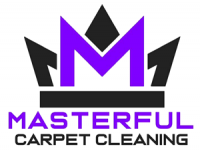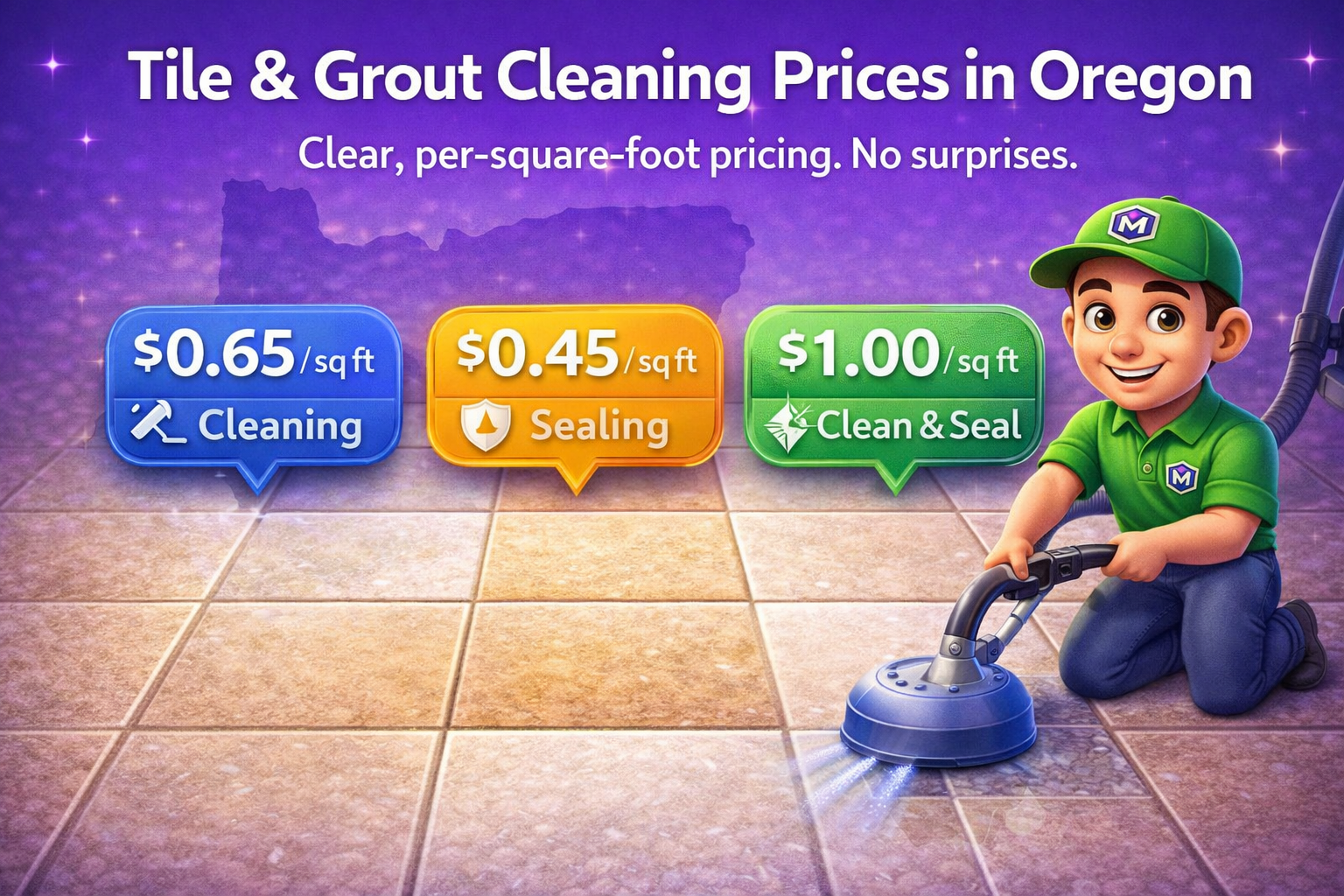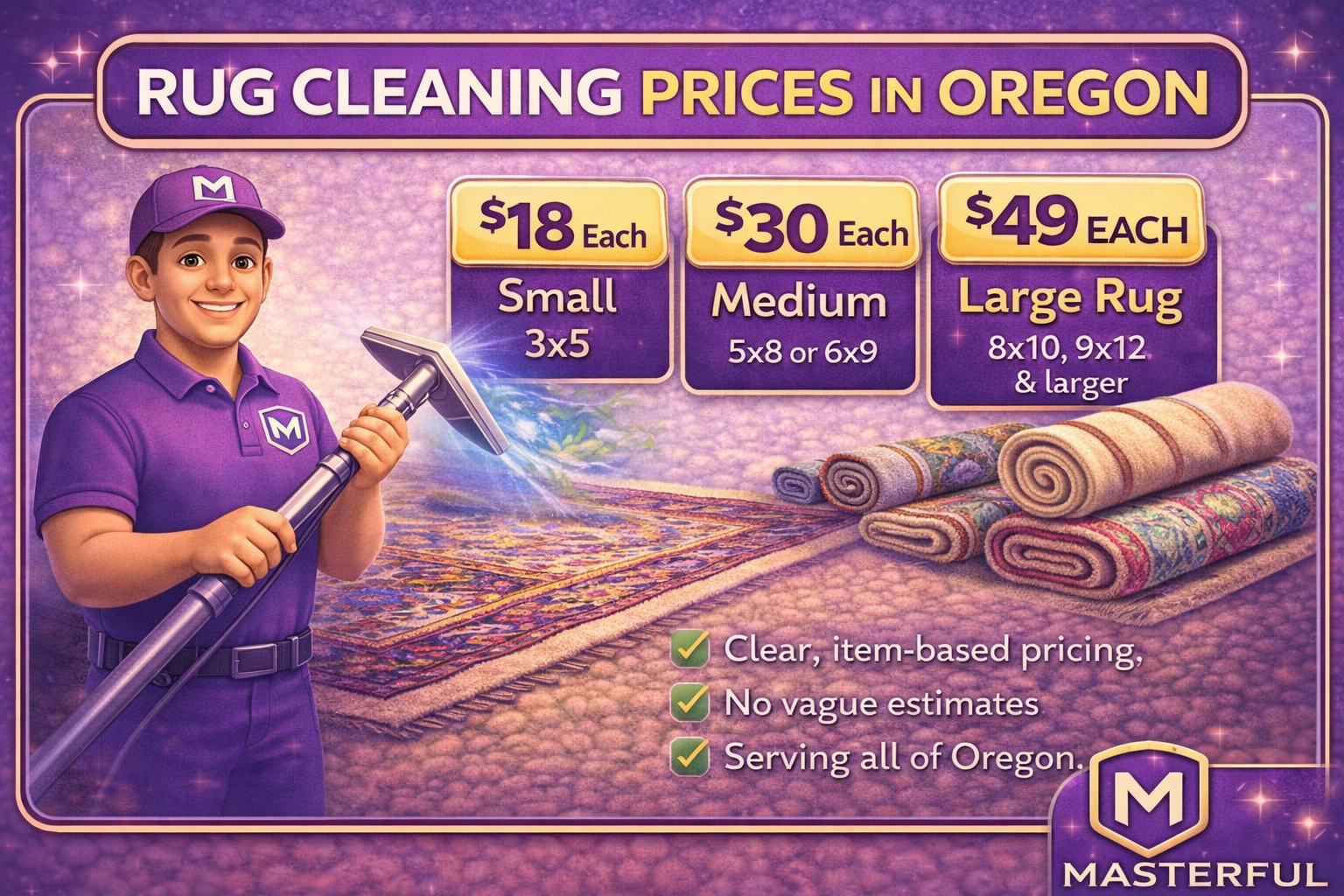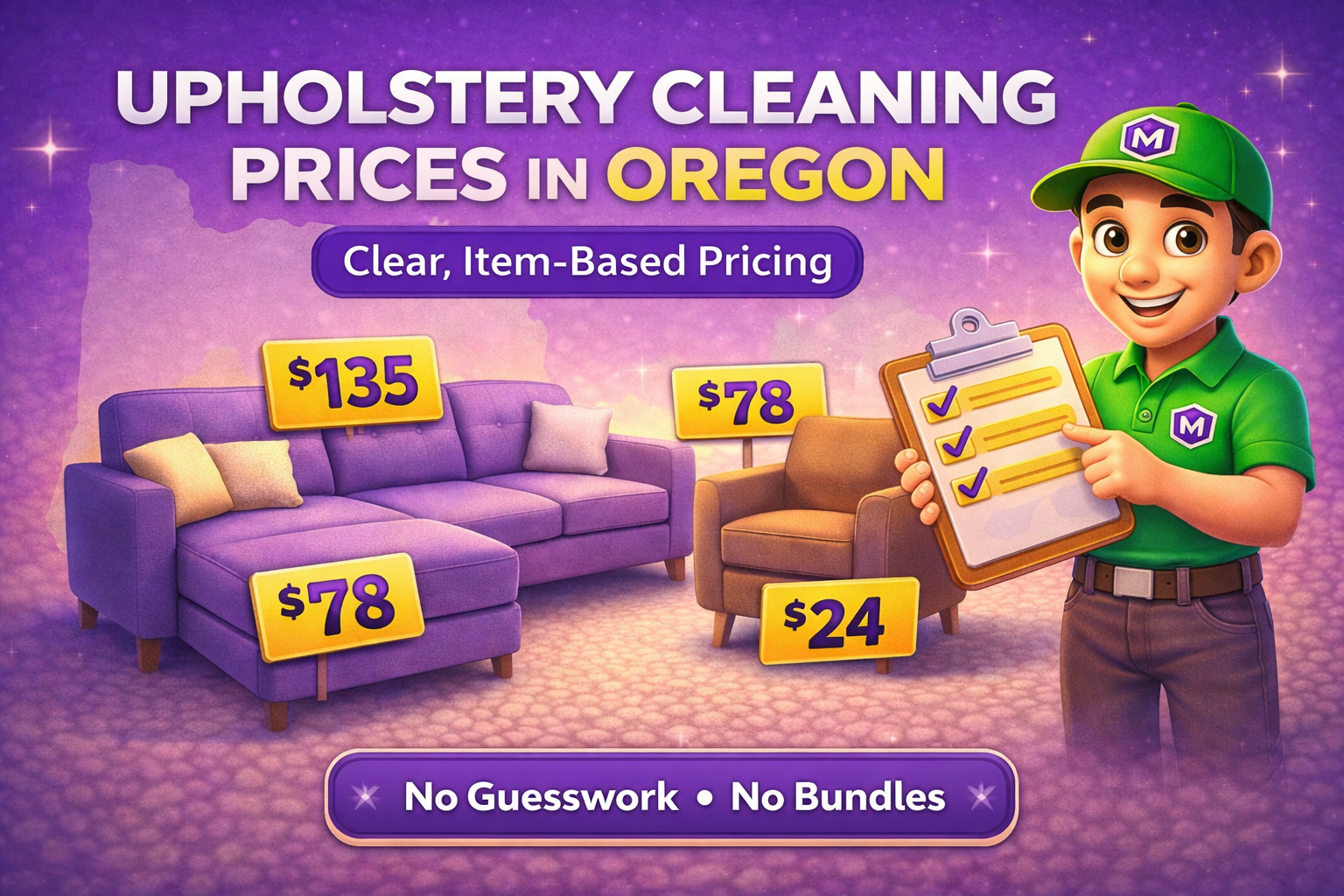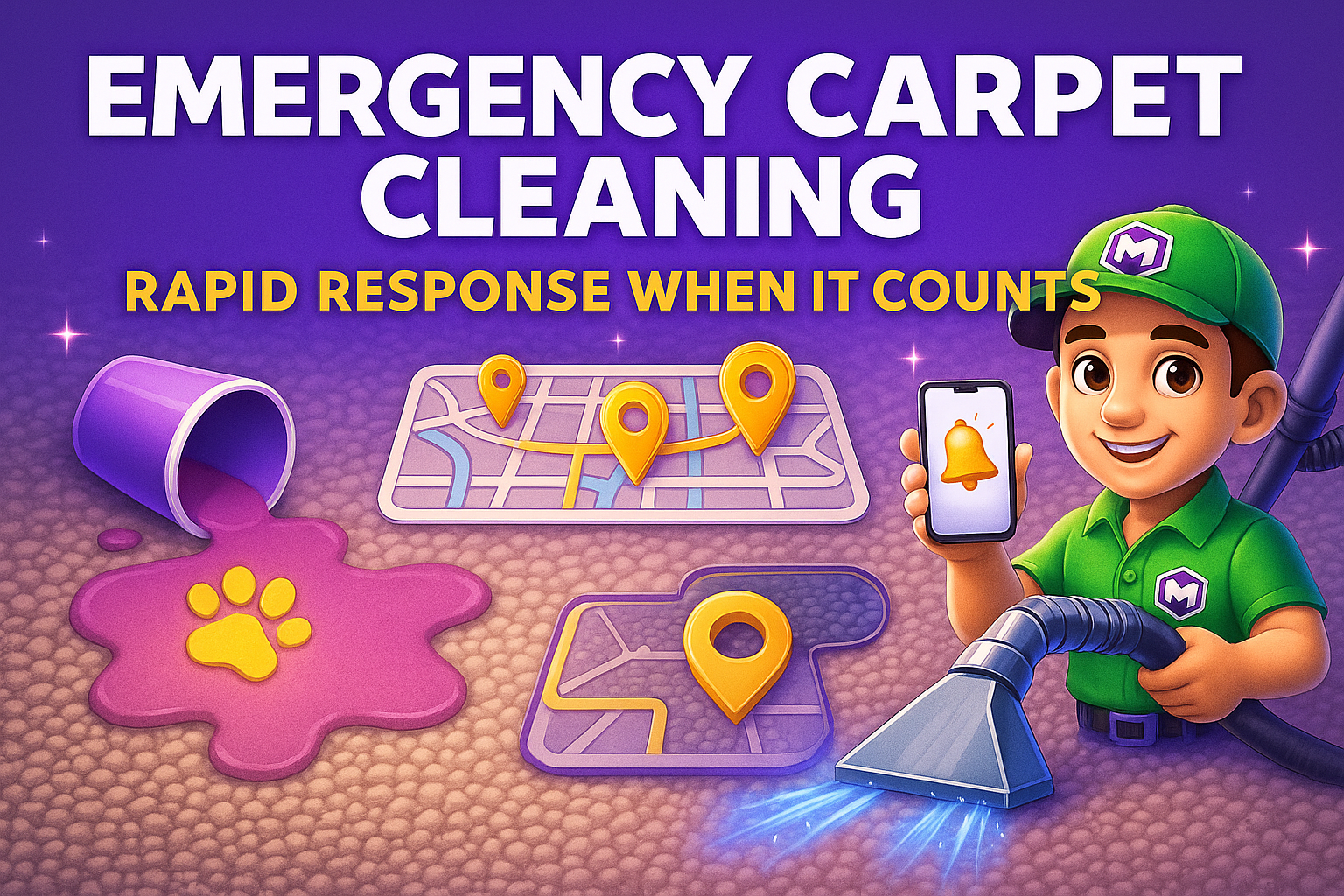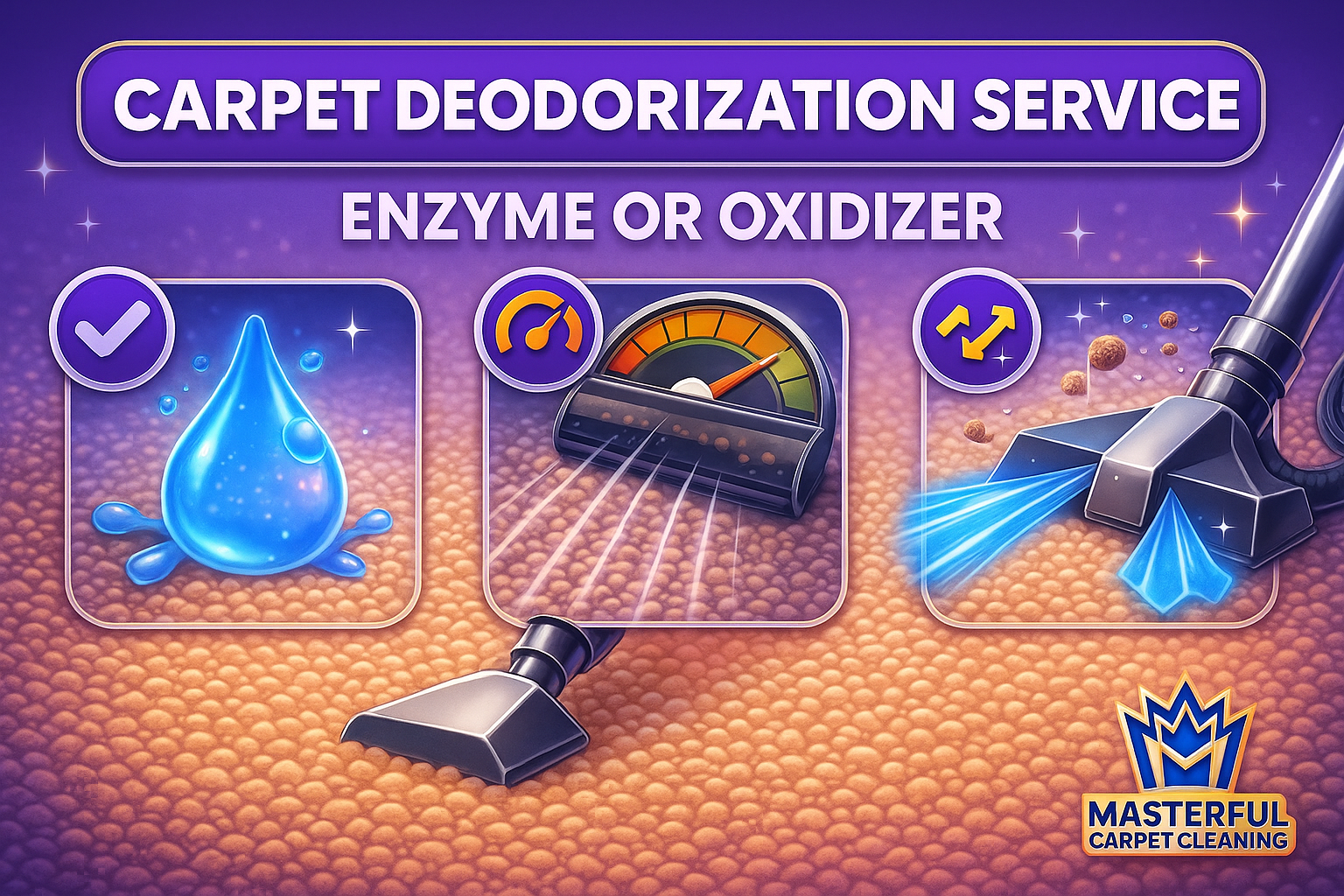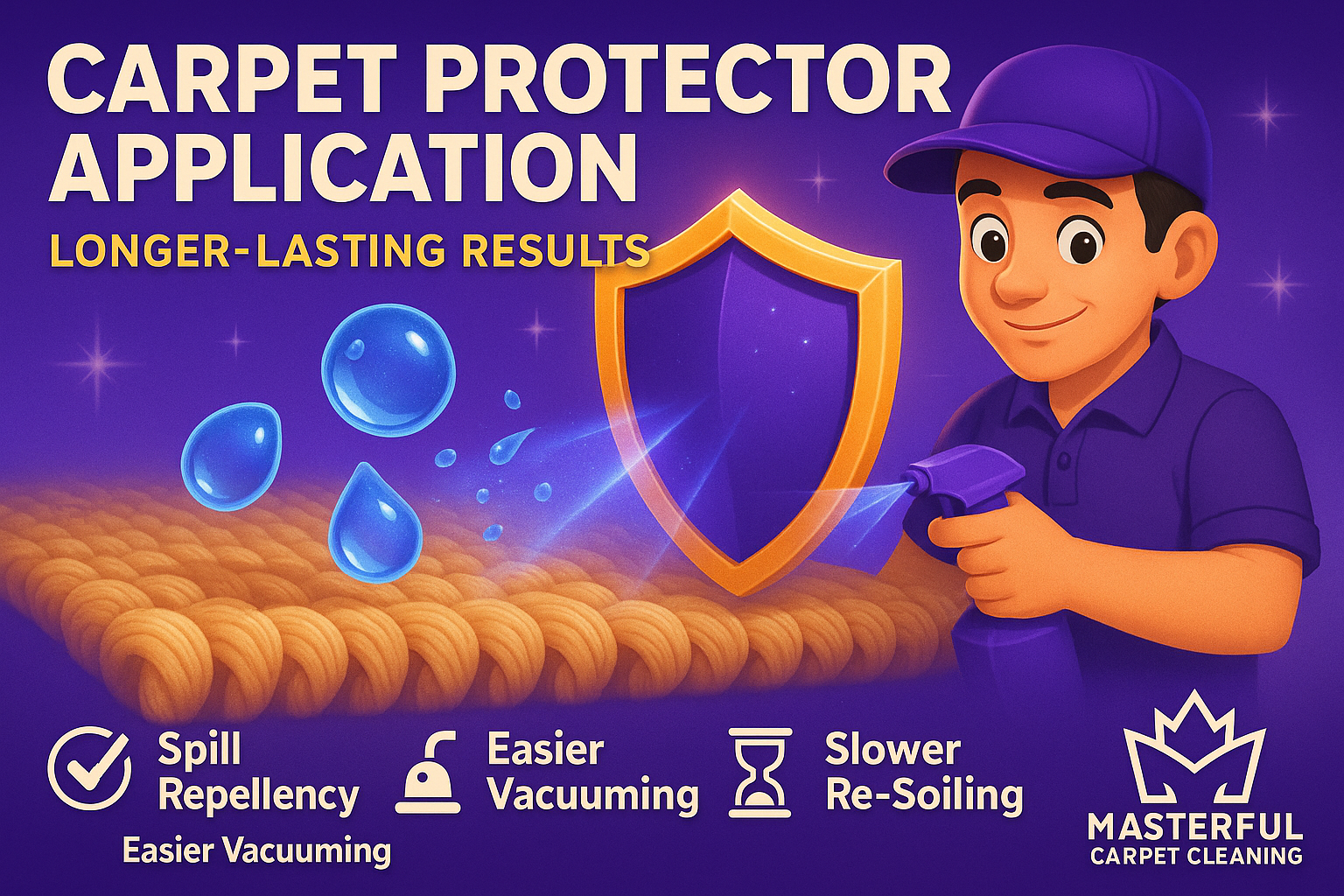Creating a Regular Cleaning Schedule for Pet Owners: Maintaining Freshness and Hygiene (Oregon Edition)
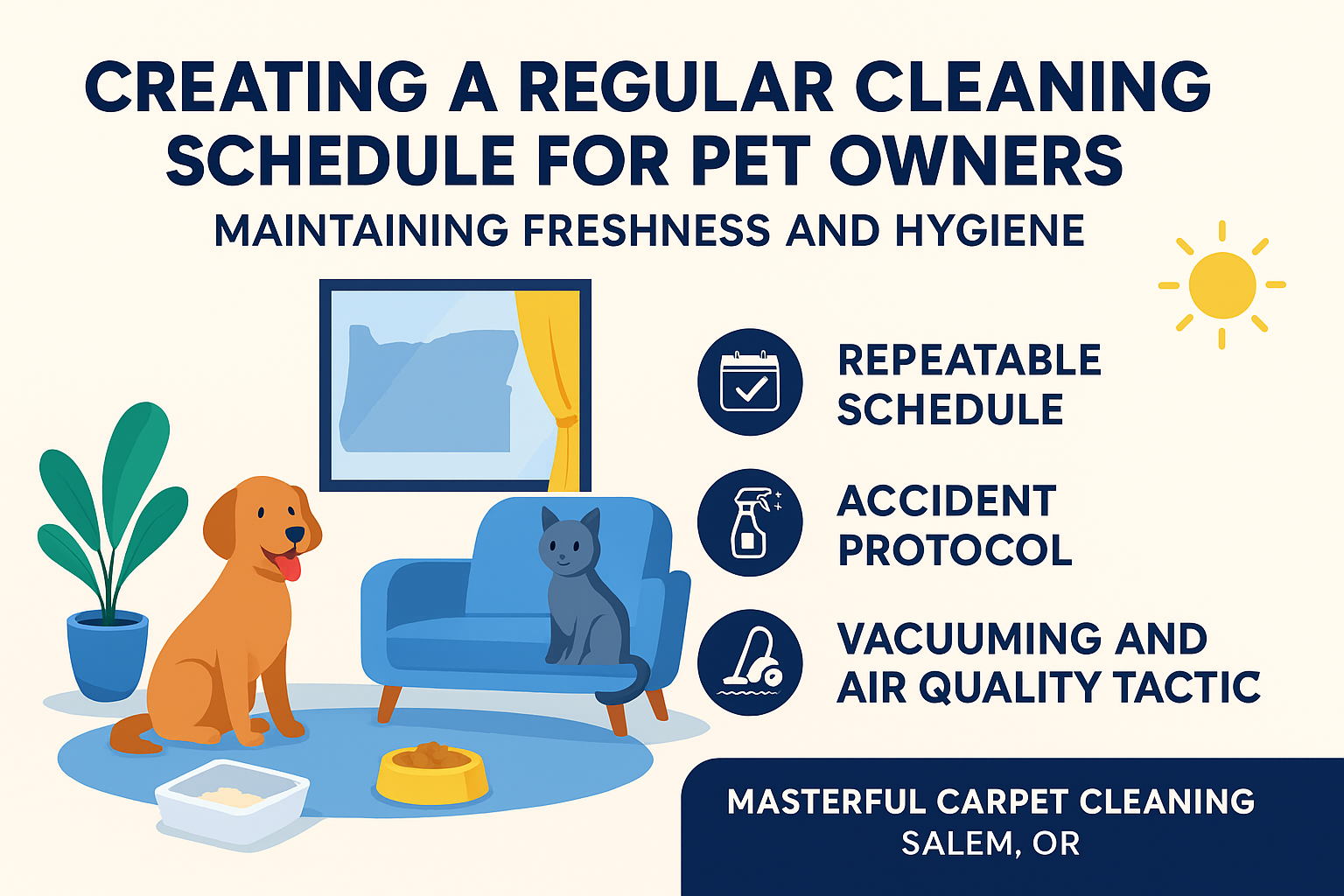
Oregon’s wet season (roughly October through May) means months of paw tracked moisture and fine grit grinding into fibers. Summer brings pollen bursts and, some years, wildfire smoke, which leaves ultra-fine particles (PM2.5) on soft surfaces. Your schedule needs to flex with those inputs. The National Weather Service’s Salem climate records show rainfall frequency rises in early October and remains elevated through late spring, so add cleaning “pressure” then. (National Weather Service)
During smoke events, the EPA recommends closing windows, avoiding particle making activities in a designated “clean room,” and using a portable HEPA air cleaner; if your system allows, MERV-13+ HVAC filters help capture more smoke particles. We’ll build those steps into your seasonal plan below. (US EPA).
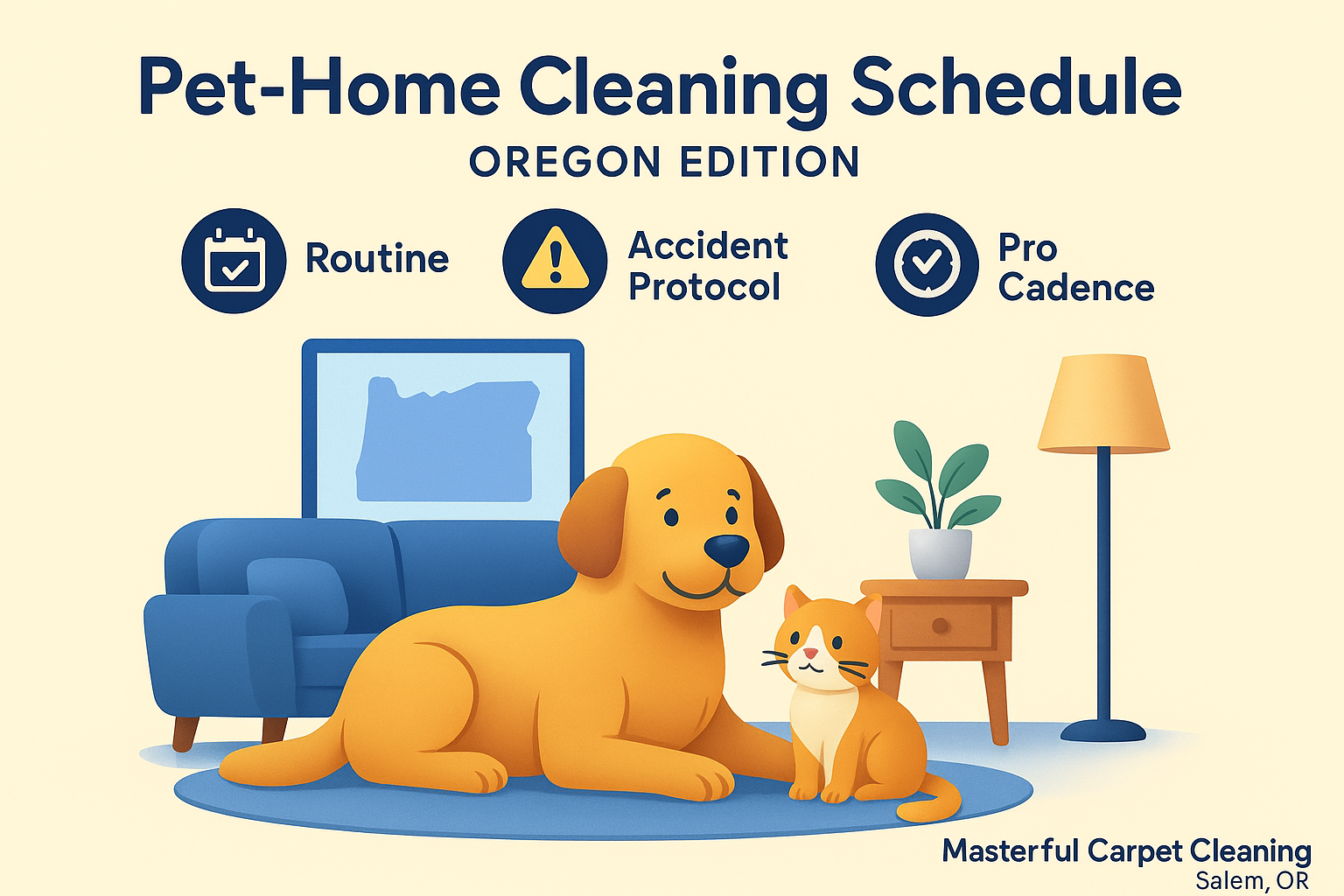
What this guide delivers (quick read)
- A repeatable schedule you can keep: daily, weekly, monthly, and seasonal tasks tuned to Oregon’s rain, mud, pollen, and wildfire smoke.
- Accident protocol that works (and what not to do).
- Vacuuming and air-quality tactics that genuinely reduce dander and odors (not just mask them).
- When to bring in local pros for subsurface odor issues – plus a cadence that keeps carpets, rugs, and upholstery fresher, longer.
If you only do three things: (1) run a simple 3-2-1 routine, (2) add seasonal pivots for rain/smoke, and (3) schedule pro cleaning on a realistic cadence. For service details and booking, call Masterful Carpet Cleaning.
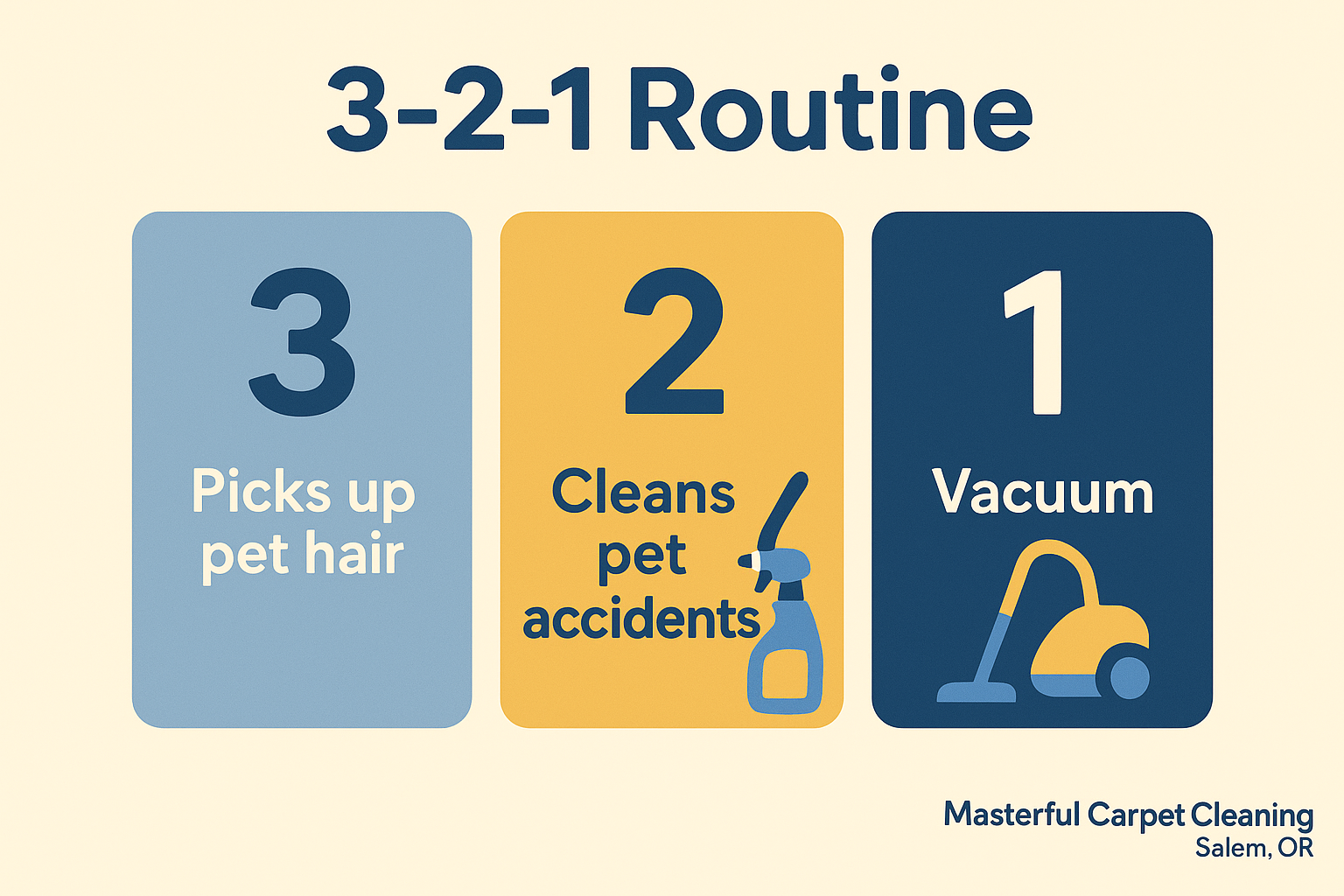
The Oregon “3-2-1” routine for pet owners
3 daily habits (5-15 minutes total)
- Entry control: shake the outside scraper mat, launder/air the inside absorbent mat regularly, and keep a towel at each door for quick paw wipes.
- Feeding stations: wipe bowls/mats, dry the floor (discourages mildew).
- Fur patrol: quick hand-vac pass on visible tumbleweeds; scoop litter and bag waste.
2 weekly passes
- Vacuum high-traffic paths + edges/baseboards using slow, overlapping strokes. Use a sealed/HEPA-capable vacuum so what you capture stays captured. AAFA’s certification program emphasizes both pickup and containment of allergens during vacuuming.
- Hard floors: sweep/vac first; follow with a light damp-mop so you’re not spreading a muddy slurry deeper into seams.
1 monthly focus
- Rotate a “deep” zone (sofas → bedrooms → rugs → stairs).
- Launder or high-heat dry throws, pet blankets, and removable covers.
Rule of thumb: high-traffic pet zones may merit daily quick vacs, medium traffic twice weekly, light traffic weekly, with a deeper professional clean on a cadence that matches your home’s reality (see below).

Seasonal changes for Oregon
Nov-Mar: rain & mud months
- Double-mat entries (scraper outside, absorbent inside).
- Add a mid-week vacuum on traffic lanes.
- Keep boot trays and a door-side towel + spray for paws; dry mopping hard floors prevents dirty rinse-water streaks.
Apr-Jun: pollen pops
- Add edge passes and baseboard detail (pollen drifts collect at boundaries).
- Wash curtains and pet bedding more often.
- Consider HEPA purifiers in main living/sleeping rooms; HEPA reduces airborne allergens when sized appropriately for the room. (Asthma & Allergy Foundation of America)
Jul-Sep (and whenever AQI spikes): smoke protocol
- Make a clean room: close windows/doors; avoid cooking, candles, and smoking; run a portable HEPA unit; set HVAC to recirculate. If compatible, use MERV-13 or higher filters – Oregon’s smoke guidance highlights MERV 13-16 for better PM2.5 removal (consult an HVAC tech for system limits). After smoke clears, vacuum carpets/upholstery and launder soft goods.

Room-by-room checklist
- Entry/mudroom – shake mats; wipe boot tray; vacuum thresholds; hang a paw towel; keep enzyme cleaner in a labeled caddy.
- Living room – cross pattern vacuum; detail sofa seams/crevices; rotate cushions; tumble-dry throws to de-fur.
- Bedrooms – weekly vacuum + monthly underbed pass; refresh mattress protector; run a purifier if pets sleep here.
- Kitchen/feeding zone – daily wipe bowls/mats; rinse and dry floors; keep slip-resistant, washable feeding mats.
- Laundry – pet textiles in a separate load; add an extra rinse; wipe the washer gasket (fur builds up).
- Bathrooms/litter area – sweep granules; vacuum corners; keep a small mat to catch scatter.
Pet accident protocol (what works)
Supplies: white cloths/paper towels, pet-safe enzyme cleaner, lukewarm water in a spray bottle, gloves, wet/dry vac (optional), UV flashlight (optional).
- Lift solids (gloves on).
- Blot liquids – stack towels, press (don’t rub).
- Light rinse (mist lukewarm water), then blot again.
- Enzyme time – apply per label and allow full dwell; blot. Repeat if odor lingers.
- Avoid steam on fresh urine; heat can set odor compounds deeper.
- Avoid ammonia based products; scent similarity can encourage re-marking. Use enzymes first.
- Still smells? That suggests contamination of the pad/subfloor (wick-back). You’ll need subsurface extraction from a pro.
If you’re in Salem, Masterful’s dedicated Pet Urine & Odor Removal service handles UV mapping + subsurface treatment designed for pet compounds. See the service details here.
Vacuum smarter (and reduce dander)
- Edge tool first, then main head, edges/angles hold the most hair and grit.
- Move slowly with overlap and a cross-hatch pattern; two deliberate passes beat four fast ones.
- Keep the brush height set so bristles graze fibers without stalling.
- Replace bags/filters before they’re “full”, airflow drops long before that.
- Use a sealed/HEPA capable machine to prevent re-aerosolizing what you just picked up; AAFA’s certification criteria address both removal and containment during vacuuming.
Upholstery & rugs: tags, tests, and real-world care
- Know the tag: W (water-based ok), S (solvent only), W/S (either), X (vacuum only – call a pro for stains).
- Spot test any cleaner on a hidden area; groom the pile after to avoid clean rings.
- Area rugs: vacuum front and back where construction allows; rotate 180° monthly to even wear.
- Natural fibers (wool/jute/sisal): use minimal moisture; if a spill wicks quickly or odor persists, call a pro.
- Cushion cores that absorbed urine often need professional treatment or replacement.

How often should Oregon pet owners get pro cleaning?
- Baseline (industry standard): Professional deep cleaning every 12-18 months, more often if needed. In homes with pets, “needed” usually arrives sooner.
- Practical cadence:
- 1 pet, solid routine: every 6-12 months.
- 2+ pets and/or accidents: every 3-6 months, plus upholstery every other visit.
- Post-smoke season or after major accidents: schedule a reset clean.
You’ll benefit from pro-grade UV inspection, subsurface extraction, and odor neutralization, the tools that reach padding and subfloor when DIY can’t. For what that looks like locally, start with Masterful Carpet Cleaning.
The 12-week rotating deep-clean loop
Keep bigger jobs tiny by splitting them across 12 weeks and repeating:
- Sofa & chairs (vacuum, spot treat)
- Bedrooms (under beds/closets)
- Area rugs (front/back; rotate)
- Stairs & landings
- Baseboards + low walls (the “fur line”)
- Curtains/blinds
- Pet zones (kennel/crate/litter overhaul)
- Mattress refresh + bed frames
- Entry closets & shoe racks
- Playroom/bonus room soft goods
- Office chairs + under-desk zone
- Ghost-odor hunt (UV scan → enzyme → decide on pro visit)
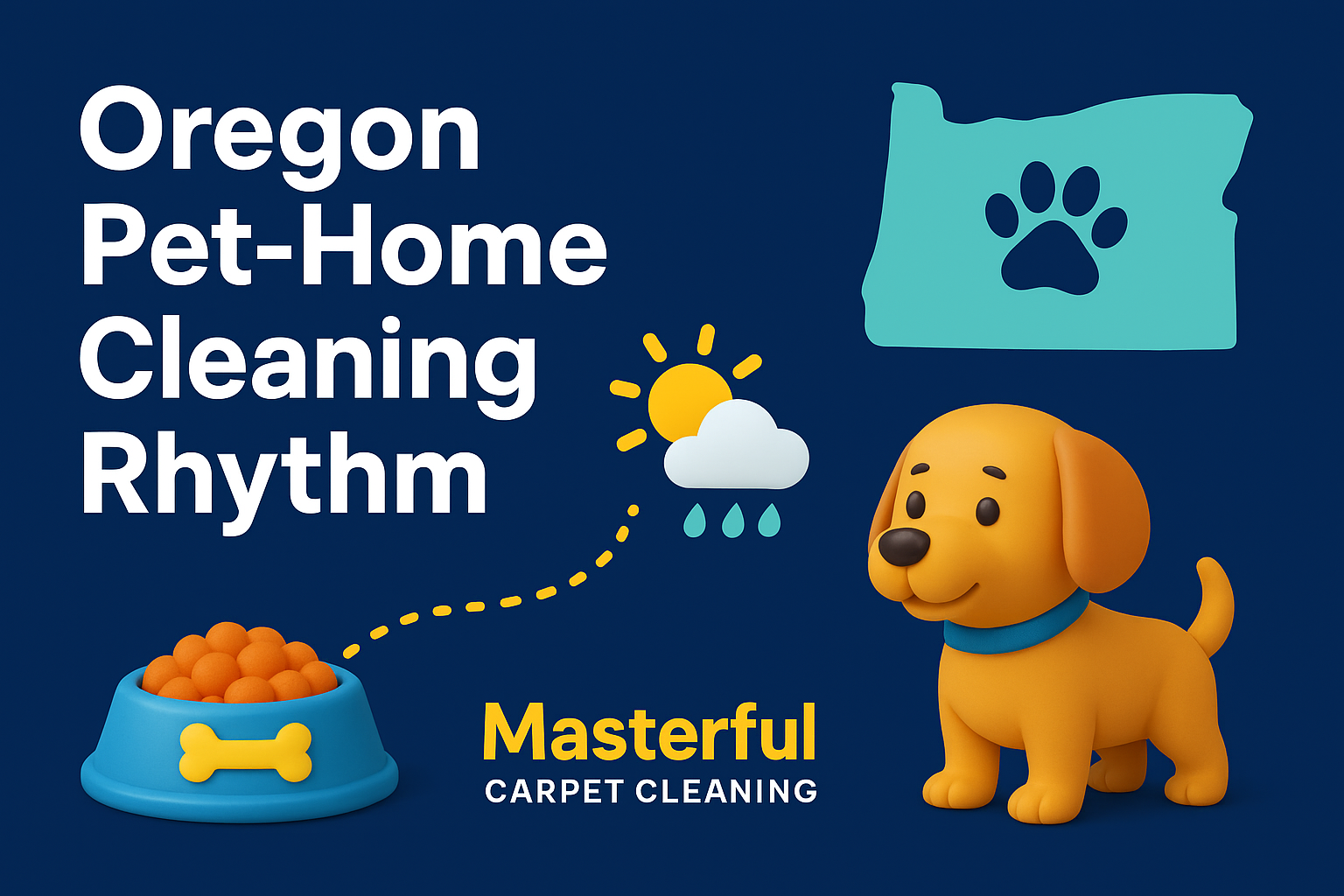
Tools & supplies (right-sized kit)
- Enzyme cleaner (urine/organic odors)
- Neutral pH hard-floor cleaner
- Microfiber cloths (stack 10-12)
- Handheld vacuum (stairs, upholstery, litter trails)
- Lint rollers or rubber squeegee for upholstery and rugs
- Soft-bristle upholstery brush
- HEPA air purifier sized for your main living room/bedroom; avoid ozone-producing devices. EPA “clean room” guidance: close windows/doors and recirculate HVAC during smoke.
Signs it’s time to call pros (don’t wait)
- You smell something but can’t locate it (UV finds what noses miss).
- Stains reappear after drying (wick-back from the pad).
- Odors bloom with humidity or when you sit.
- Family allergies flare despite routine care.
- You’re prepping for a move-out or listing photos.
When you’re ready to schedule, use the one-and-done link to Book Online so you don’t hunt for it again later. Reserve a cleaning slot.
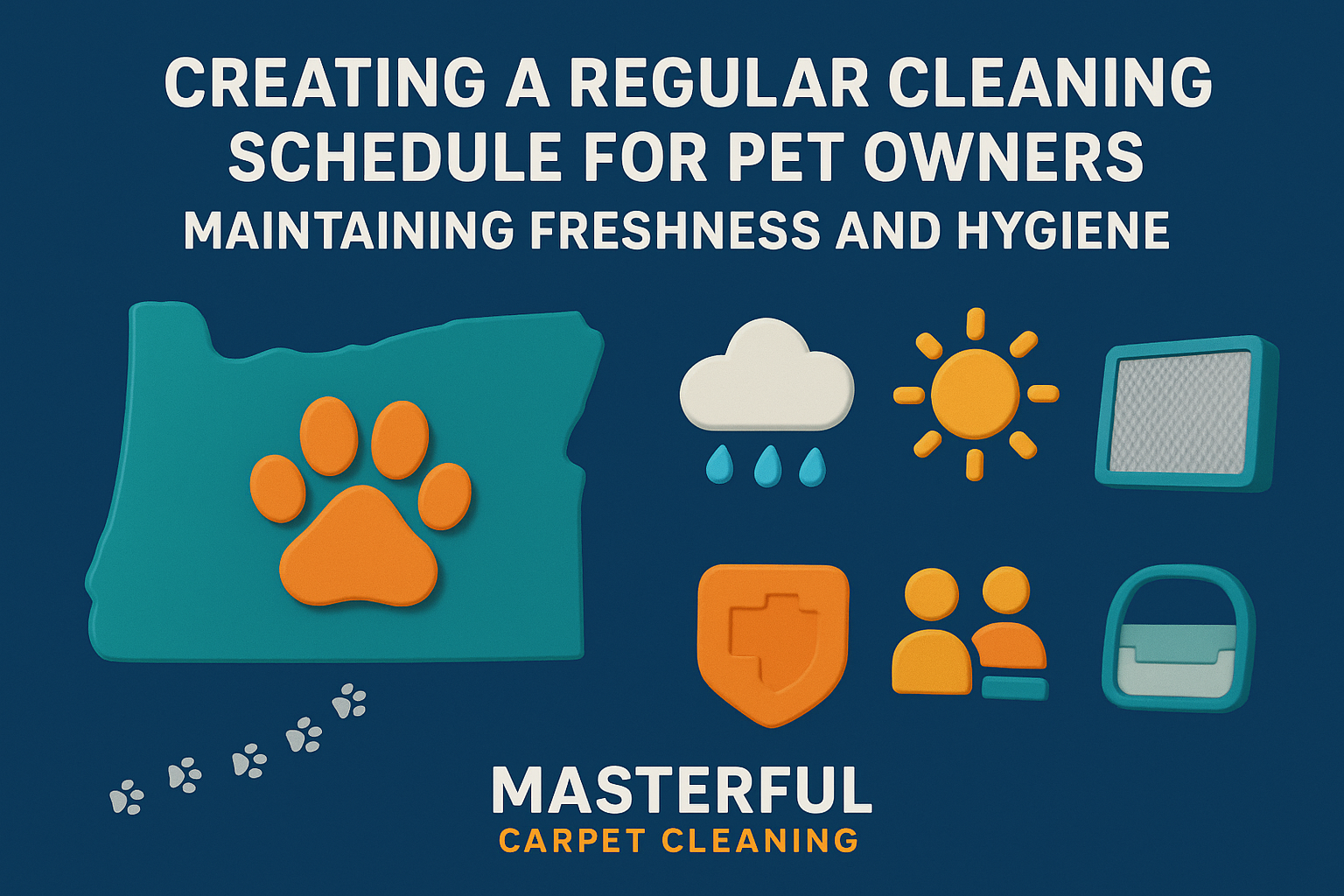
Nightly 10 minute reset (the habit that holds it together)
- Scoop litter/yard.
- Wipe bowls and feeding mat.
- Shake the inside mat; line up shoes.
- Quick fur sweep on the living room path.
- Sniff walk: spot-check for new accidents.
- Toss throws into a “pet textiles” hamper.
- Set the purifier to Auto; empty small trash.
- Lay out a door towel for the morning rush.
Resources
- Learn how pros tackle odor with UV → enzyme → extraction in this explainer: Innovations in Pet Odor Elimination.
- Big picture on pets + carpets? See: The Challenge of Maintaining Clean Carpets in Pet-Friendly Spaces.
- Prefer to talk first? Use the Contact Us page for a call or message: Get in touch. Curious about service coverage? Check Locations for nearby cities: See service areas.
A clean, pet-friendly Oregon home isn’t about heroic weekend scrubs, it’s about rhythm. Stick to the 3-2-1 routine, switch for rain and smoke, and bring in Masterful Carpet Cleaning on the right cadence to reset fibers and neutralize odors below the surface. Your home will smell cleaner, feel fresher, and stay healthier for you and your pets.
As the Co-Owner of Masterful, Randy has been providing quality cleaning services to the Salem and Portland areas of Oregon for many years. He has built a reputation for excellence in the industry. His team take prides in using the latest cleaning techniques and technologies to deliver exceptional results every time. Author

